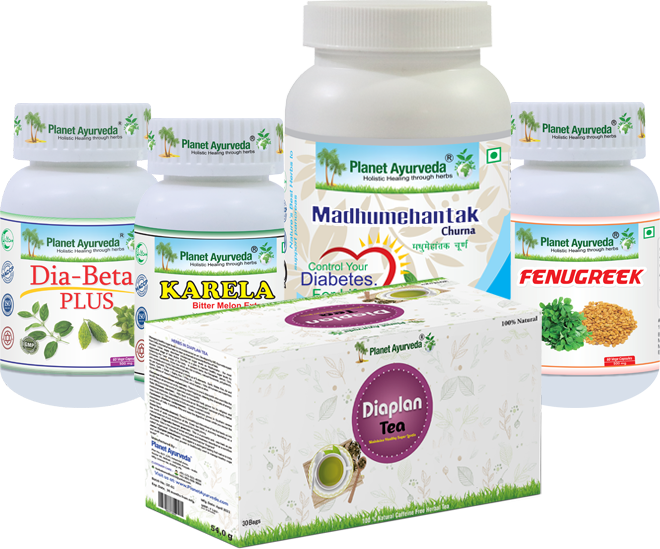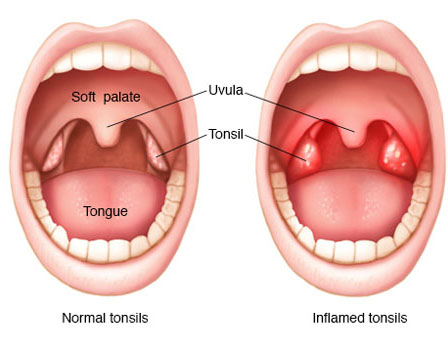Reference – Bhaishajya-Ratnavali Garbhinirogadhikar 68/94-96
ABSTRACT
Pregnancy is a phase that requires careful support of both the physical and emotional well-being of the mother for a healthy outcome. In Ayurveda, this delicate period is addressed with time-tested formulations that focus on strengthening the reproductive system, preventing complications, and promoting the health of both mother and fetus. One such revered classical preparation is Garbhpal Ras, a herbo-mineral formulation widely used in managing various gynecological and pregnancy-related conditions. It helps maintain hormonal balance, prevents habitual abortion, alleviates uterine weakness, and improves overall vitality. With its holistic approach, Garbhpal Ras is recognized for ensuring maternal wellness and supporting full-term, safe delivery.
INTRODUCTION
"Garbhpal" literally means "protector of pregnancy". Garbhpal Ras is a classical Ayurvedic formulation mentioned in authoritative texts like Bhaishajya Ratnavali, under Striroga Chikitsa Adhikar (management of women's disorders). It is specially indicated for strengthening the uterus, promoting the growth of the fetus, and addressing disorders like habitual abortion (Garbhasrava), threatened miscarriage (Garbhapatan), and menstrual irregularities. Ayurveda views pregnancy as a state governed by a delicate balance of Doshas, Dhatus (tissues), and Ojas (vitality). Garbhpal Ras helps maintain this equilibrium by acting on the reproductive channels (Artavavaha Srotas), digestive fire (Agni), and enhancing the maternal vitality.
CLASSICAL INDICATIONS
Garbhinirog (Pregnancy-related diseases)
INGREDIENTS OF GARBHPAL RAS
- Shuddha Hingula (Red sulphide of Mercury) – 12 gm
- Nag Bhasma (Lead calx) – 12 gm
- Vanga Bhasma (Tin calx) – 12 gm
- Elaichi Churna (Powder of Elettaria cardamomum) – 12 gm
- Dalchini Churna (Powder of Cinnamomum verum) – 12 gm
- Tejpatra Churna (Powder of Cinnamomum tamala) – 12 gm
- Shunthi Churna (Powder of Zingiber officinale) – 12 gm
- Pippali Churna (Powder of Piper longum) – 12 gm
- Maricha Churna (Powder of Piper nigrum) – 12 gm
- Dhaniya Churna (Powder of Coriandrum sativum) – 12 gm
- Shahjeera Churna (Powder of Bunium persicum) – 12 gm
- Chavya Churna (Powder of Piper chaba) – 12 gm
- Draksha kalka (Paste of Vitis vinifera) – 12 gm
- Devdaru Churna (Powder of Cedrus deodara) – 12 gm
- Loha Bhasma (Iron calx) – 6 gm
DESCRIPTION OF KEY INGREDIENTS
1. Shuddha Hingula (Red Sulphide Of Mercury)
Shuddha Hingula is the purified form of Hingula (Red Sulphide of Mercury), prepared through classical Shodhana (purification) processes. It is Tikshna (sharp/penetrating), Laghu (light to digest), and Ushna Virya (hot in potency). It primarily acts as a Yogavahi (catalyst/bio-enhancer), enhancing the action of co-administered herbs and minerals.
In GarbhPal Ras, Shuddha Hingula stabilizes Vata (air element) and Pitta (fire element), prevents miscarriage (Garbha Paat), nourishes Shukra Dhatu (reproductive tissue), and supports fetal retention by improving bioavailability of other ingredients.
2. Nag Bhasma (Lead Calx)
Nag Bhasma is a purified and incinerated form of Nag (processed Lead). It exhibits Kashaya Rasa (astringent taste) and Tikta Rasa (bitter taste), with Guru Guna (heavy quality) and Snigdha Guna (unctuous quality). It possesses Sheeta Virya (cold potency) and acts on Majja Dhatu (bone marrow tissue) and Shukra Dhatu (reproductive tissue). In Garbh Pal Ras, Nag Bhasma (Lead Calx) helps strengthen the uterine walls, promotes fetal development, and addresses uterine debility. It is especially effective in habitual abortions and thin endometrium cases.
3. Vanga Bhasma (Tin Calx)
Vanga Bhasma is a purified calx of Vanga (Tin), prepared through repeated incineration. It has Madhura Rasa (sweet taste) and Kashaya Rasa (astringent taste), Laghu Guna (light quality) and Snigdha Guna (unctuous quality), with Sheeta Virya (cold potency). It primarily works on Shukra Dhatu (reproductive system) and Majja Dhatu (bone marrow). In Garbh Pal Ras, Vanga Bhasma (Tin Calx) enhances reproductive health, strengthens uterine tissues, supports hormonal regulation, and helps sustain normal pregnancy, especially in cases of weakness of reproductive organs.
4. Elaichi Churna (Powder of Elettaria cardamomum)
Elaichi or Sukshmaila (Cardamomum) is a potent aromatic herb with Madhura Rasa (sweet taste) and Tikta Rasa (bitter taste), Laghu Guna (light quality) and Ruksha Guna (dry quality), and Ushna Virya (hot potency). It pacifies Kapha Dosha (water element) and Vata Dosha (air element) and improves Agni (digestive fire). In Garbh Pal Ras, Elaichi relieves nausea, improves appetite, and promotes mental clarity. It also helps manage vomiting (Chhardi) and digestive sluggishness, commonly seen in pregnancy.
5. Dalchini Churna (Powder of Cinnamomum verum)
Dalchini or Twak (Cinnamomum) is a warming spice that has Tikta Rasa (bitter taste) and Katu Rasa (pungent taste), Laghu Guna (light quality) and Tikshna Guna (sharp quality), with Ushna Virya (hot potency). It balances Kapha Dosha (water element) and Vata Dosha (air element). In Garbh Pal Ras, Dalchini (Cinnamomum) improves digestion, supports circulation to the uterus, and alleviates flatulence. Its gentle stimulating effect ensures proper nutrient delivery to the fetus.
6. Tejpatra Churna (Powder of Cinnamomum tamala)
Tejpatra or Indian Bay Leaf has Tikta Rasa (bitter taste) and Katu Rasa (pungent taste), Laghu Guna (light quality) and Tikshna Guna (penetrating quality), with Ushna Virya (hot potency). It pacifies Vata Dosha (air element) and Kapha Dosha (water element). In Garbh Pal Ras, Tejpatra promotes digestion, reduces bloating, and helps remove Ama (toxic, undigested matter). It improves uterine blood flow and supports healthy metabolism during pregnancy.
7. Shunthi Churna (Powder of Zingiber officinale)
Shunthi or dry ginger is a powerful herb with Katu Rasa (pungent taste), Laghu Guna (light quality) and Tikshna Guna (sharp quality), and Ushna Virya (hot potency). It pacifies Vata Dosha (air element) and Kapha Dosha (water element). In Garbh Pal Ras, Shunthi (dry ginger) is used to relieve nausea, reduce colic pain, strengthen Agni (digestive fire), and combat coldness in the uterus, which could lead to fetal instability.
8. Pippali Churna (Powder of Piper longum)
Pippali or long pepper has Katu Rasa (pungent taste) and Madhura Rasa (sweet after-digestion effect), Laghu Guna (light quality) and Tikshna Guna (sharp quality), and Ushna Virya (hot potency). It acts as a Rasayana (rejuvenative) and Yogavahi (bio-enhancer). In Garbh Pal Ras, Pippali (long pepper) enhances absorption of minerals, strengthens digestive capacity, supports Shukra Dhatu (reproductive tissues), and boosts reproductive vitality, improving conception and sustaining pregnancy.
9. Maricha Churna (Powder of Piper nigrum)
Maricha or black pepper has Katu Rasa (pungent taste), Tikshna Guna (penetrating quality), and Laghu Guna (light quality), with Ushna Virya (hot potency). It pacifies Vata Dosha (air element) and Kapha Dosha (water element), and is an excellent Agni-deepaka (digestive stimulant). In Garbh Pal Ras, Maricha (black pepper) acts synergistically to improve nutrient assimilation, combat digestive disorders, and stimulate circulatory and respiratory functions, which are vital for maternal and fetal health.
10. Dhaniya Churna (Powder of Coriandrum sativum)
Dhaniya or coriander seeds have Madhura Rasa (sweet taste) and Tikta Rasa (bitter taste), Laghu Guna (light quality) and Snigdha Guna (unctuous quality), with Sheeta Virya (cold potency). It balances Pitta Dosha (fire element) and Kapha Dosha (water element). In Garbh Pal Ras, Dhaniya (coriander seeds) supports liver function, reduces burning sensation, alleviates digestive issues, and relieves urinary discomfort during pregnancy. It also has a cooling and calming effect on the body and mind.
11. Krishanjeera Churna (Powder of Bunium persicum)
Shahjeera, or caraway seed, has Katu Rasa (pungent taste) and Tikta Rasa (bitter taste), Laghu Guna (light quality) and Tikshna Guna (sharp quality), with Ushna Virya (hot potency). It pacifies Kapha Dosha (water element) and Vata Dosha (air element). In Garbhpal Ras, Krishanjeera (caraway seed) aids in digestion, prevents gas accumulation, and alleviates abdominal discomfort. It also helps in reducing uterine spasms and supports fetal nourishment by improving digestion.
12. Chavya Churna (Powder of Piper chaba)
Chavya (Piper chaba) is a pungent herb with Katu Rasa (pungent taste), Tikshna Guna (sharp quality) and Laghu Guna (light quality), and Ushna Virya (hot potency). It is a strong Agni-deepaka (digestive stimulant) and Vata-Kapha Shamak (air and water dosha pacifier). In Garbhapal Ras, Chavya (Piper chaba) helps in managing bloating, constipation, and Ama (toxic build-up). It facilitates smooth bowel movement, improves digestive fire, and thus contributes to maternal and fetal well-being.
13. Draksha Kalka (Paste of Vitis vinifera)
Draksha, or Raisin/Grape, is used in the form of Kalka (paste) and is rich in natural sugars, antioxidants like resveratrol, and essential vitamins. It has Madhura Rasa (sweet taste), Snigdha Guna (unctuous quality) and Mridu Guna (soft quality), with Sheeta Virya (cool potency) and Madhura Vipaka (sweet post-digestive effect). It balances Vata Dosha (air element) and Pitta Dosha (fire element). In Garbhpal Ras, Draksha Kalka (Paste of Vitis vinifera) nourishes Rasa Dhatu (plasma tissue), alleviates fatigue, supports blood formation, and improves bowel regularity. It enhances maternal strength, prevents dehydration, and acts as a tonic for the uterus during pregnancy.
14. Devdaru Churna (Powder of Cedrus deodara)
Devdaru, or Himalayan Cedar, has Tikta Rasa (bitter taste) and Katu Rasa (pungent taste), with Laghu Guna (light quality) and Tikshna Guna (sharp quality), and Ushna Virya (hot potency). It pacifies Vata Dosha (air element) and Kapha Dosha (water element). In Garbhpal Ras, Devdaru (Himalayan Cedar) acts as a deepana (digestive stimulant) and Shoolahara (pain reliever). It helps in reducing uterine cramps, improving digestive metabolism, and relieving heaviness and bloating, common discomforts in pregnancy caused by Vata-Kapha imbalance.
15. Loha Bhasma (Iron Calx)
Loha Bhasma is an incinerated preparation of purified Loha (Iron), processed through multiple stages of Marana (calcination) and Bhavana (levigation). It has Kashaya Rasa (astringent taste) and Tikta Rasa (bitter taste), Guru Guna (heavy quality) and Ruksha Guna (dry quality), with Ushna Virya (hot potency). It is Tridosha Shamak (balances all three doshas) and especially rejuvenates Rakta Dhatu (blood tissue). In Garbhpal Ras, Loha Bhasma (Iron Calx) serves as an excellent hematinic (blood builder) and is crucial in preventing and managing Pandu Roga (anemia) during pregnancy. It enhances oxygen supply, supports fetal growth, and strengthens both mother and fetus by improving Rakta Dhatu (blood tissue) quality.
METHOD OF PREPARATION
All the ingredients—Shuddha Hingula (Red sulphide of mercury), Nag Bhasma (Lead calx), Vanga Bhasma (Tin calx), various other aromatic and digestive herbal ingredients, Draksha Kalka (grape paste), Devdaru Churna (cedarwood), and Loha Bhasma (Iron calx)—are first finely powdered and mixed in a stone mortar (Khalva Yantra). This homogeneous mixture is then subjected to Bhavana (triturating with liquid media) using freshly extracted Aparajita Swaras (juice of Clitoria ternatea) for 7 consecutive days, each day with one full Bhavana (levigation cycle) in a stone Khalva Yantra (stone mortar and pestle). During each Bhavana (levigation cycle), the mixture is mardana (triturated) continuously until the swaras (herbal juice) is completely absorbed, ensuring deep impregnation of the juice and transformation of the formulation into a soft, semi-solid mass. After completing 7 Bhavanas (levigations), the mass is rolled into 1 Ratti (approx. 125 mg) tablets manually or using a tablet-making apparatus. These tablets are then dried in the shade (chhaya sooksha) to preserve the volatile and thermolabile principles. Finally, the dried tablets are stored in airtight glass containers (Kanch-Kalash) to avoid oxidation and moisture contamination, thus maintaining the potency and shelf life of the Rasayana (rejuvinating) formulation.
DOSHA ACTION
Garbh Pal Ras is predominantly Vata–Pitta Shamak (pacifies Vata and Pitta doshas), while also offering mild regulation of Kapha where necessary. Its formulation is thoughtfully balanced with Ushna Virya (hot potency) ingredients like Shuddha Hingula (Red sulphide of mercury), Shunthi (Dry ginger), Pippali (Long pepper), and Maricha (Black pepper), which counteract Vata vitiation—the chief culprit behind uterine instability, spasmodic pain, and habitual abortion (Garbha Srava).
Simultaneously, ingredients like Draksha (Raisins), Dhaniya (Coriander), and Vanga Bhasma (Tin calx) offer Sheeta Virya (cool potency) and Snigdha Guna (unctuous quality) that help in controlling Pitta vitiation, often responsible for heat-related uterine bleeding (Rakta Pitta) and irritability of the endometrium.
Moreover, by incorporating deepana-pachana (digestive and metabolic enhancing) herbs, it assists in reducing Ama (toxic metabolic waste), which can obstruct Srotas (body channels) and impair fetal nutrition. Thus, Garbh Pal Ras helps restore the Doshic equilibrium in the reproductive system, ensuring proper fetal growth, uterine nourishment, and gestational stability.
THERAPEUTIC USE
- Used in pregnant women from the 1st to the 9th month
- Helps prevent and treat:
- Habitual abortion (Garbha Srava)
- Uterine exhaustion (Garbhashram)
- Fainting or seizures (Apasmar)
- Anemia (Pandutva).
- General uterine weakness and instability.
- Ensures fetal growth, nourishment, and safe gestation.
- Clears all obstacles in pregnancy and promotes a healthy delivery.
- Acts as a Garbha Sthapaka Rasayana (uterine stabilizing rejuvenative).
RECOMMENDED DOSAGE
- 1 Ratti = 125 mg
- Administration Frequency: Once -Twice daily (Prātaḥ-Sāyam)
ANUPAAN (CO-ADMINISTERING ADJUVANT)
- Draksha Kwath (Grape decoction)
This enhances the nutritive and cooling effect, balances Pitta, and nourishes Rasa Dhatu (plasma tissue).
PRECAUTIONS AND CONTRAINDICATIONS
- Should be taken strictly under medical supervision, especially during pregnancy
- Avoid self-medication or overdose
- Not recommended for use during active bleeding or high Pitta conditions unless advised.
CONCLUSION
Garbhpal Ras is a holistic and trusted Ayurvedic formulation that offers multifaceted support during pregnancy. Garbhpal Ras is specially designed for pregnancy support, with proven efficacy in habitual miscarriage, uterine bleeding, weakness, and recurrent fetal loss. It strengthens the uterus, supports hormonal balance, improves fetal nutrition, and protects both mother and child throughout pregnancy






